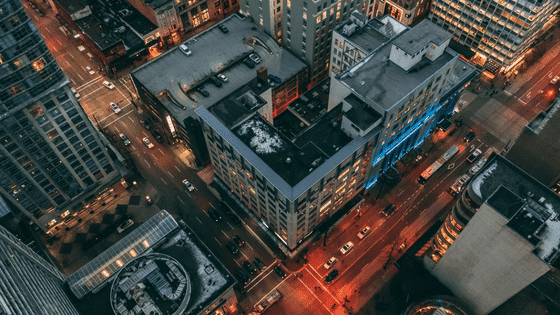A Study in Branding and Benefits: Cities Race to Impress Amazon
Amazon is looking to find a home for its second headquarters HQ2, and cities across the United States are doing just about anything to throw their hat in the ring and prove themselves worthy. Cities are offering incentives, running ad campaigns, and presenting development plans to improve their area in order to attract Amazon.
More than anything Amazon is looking for a place to grow roots where they can attract and retain top talent. Sound familiar? Once you get past some of the crazy publicity stunts to catch Amazon’s attention, we can learn some important things from these cities about a recruiting strategy.
Amazon has a fairly well-defined employer brand, but there is more to life than just work. ‘Customer Obsession’, ‘ownership’ and ‘think big’ are among a few of Amazon’s leadership principles and values that help to guide their overall employer brand. But they also boast benefits with generous time off and ’employee assistance’, allowing for life outside the office and work/life balance.
These cities are thinking about the benefits of living and working in their area, just as a company presents its benefits to a candidate. Between finances, culture, safety and more, Amazon’s hunt for a city parallels the candidate’s hunt for a job. Candidates want to be excited about their new position, and these cities want Amazon to be excited about them.
What’s Amazon looking for?
The headquarter brings hope of 5 billion in development, 50,000 new jobs paying an average six figure salaries, and more economic growth for the future.
Amazon put out a request for proposals, hoping for a metropolitan area with more than 1 million people and an educated/skilled workforce. However, they are also prioritizing cities with strong university systems and easy access to transportation.
Amazon is also looking for an area that promotes research and STEM education; this offers a pool of potential employees with the skills and education Amazon needs. In the long run, the STEM programs and local universities provide a constant collection of prospective interns and new graduates.
Finally, Amazon wants to locate in a place that new employees are excited to be. Sure, some of the things that these cities have done in an effort to get Amazon’s attention isn’t necessarily considered ’employer branding’ per say. But it’s a great parallel to both – how companies communicate their benefits and culture to candidates, and how candidates in turn pull out all the stops for a company they want to work for.
The crazy, smart, and interesting things cities have done to win over Amazon.
Dallas proposes better transportation options.
The non-stop (or always stopped) traffic is one of the biggest headaches workers must bare in Dallas. The thought of a train system has been floating for a while in the minds of lawmakers in Dallas. Since transportation is one of Amazon’s highest priorities, lawmakers added the high-speed train system to the proposal. The train would make the trip from Dallas to Houston in about 90 minutes, and connect Dallas with some of the larger research markets in Texas.
The small city outside of Atlanta offered its name.
The small city of Stonecrest will officially change its name to Amazon, if the company decides to set up shop there. The city is right outside Atlanta. It provides Amazon the metropolitan area it desires, while giving it the branding and growth opportunity of 345 acres promised.
New York lights up Orange.
New York City has its perks and is already one of the top cities for tech growth. However, its expensive cost of living is a deterrent for Amazon. While the city is also offering 3 million in tax incentives, it’s really welcoming Amazon home by lighting the skyline orange.
New Jersey goes for the big bucks.
Newark, New Jersey offered 7 billion in tax incentives for Amazon to build there. Interestingly, not all the money is directly for Amazon. The incentive is broken into three parts: 5 billion to start, another billion once 50,000 jobs are created, and 1 billion for employees over the next 10 years.
Washington DC talks with Alexa.
DC must feel like they have the leg up in the competition. Amazon’s CEO owns the largest house in DC, making his potential commute a piece of cake. So, Mayor Bowser advertised all of the ways DC is the best choice by talking with Alexa.
When in doubt, send a plant.
Tucson Arizona attempted to gift a 21-foot cactus, but the offer was declined. Amazon donated the cactus to the Arizona-Sonora Desert Museum. The gesture was meant to show Amazon that there is “room to grow in Tuscon.”
Pittsburgh stays quiet, but local businesses pitch in.
Primanti’s offers to sweeten the deal with free sandwiches for all employees. The local restaurant, Primanti Bros. tweeted that they would give every employee a free sandwich with Amazon’s arrival, and 15% off for the entire next year.
When big cities become the candidates vying for the job…
The hunt for Amazon HQ2 is just like the hunt for a great candidate. Not that I’m saying to send candidates a cactus or vice versa, but the cities are trying to make Amazon feel welcome. These cities have unique things to offer and Amazon can help them grow too.
At the end of the day, it comes down to more than just money or exposure. Amazon is looking for a place that makes employees excited. This begs the question, how far should candidates go to bend over backwards for a job that may not necessarily be the right fit in the long run?

